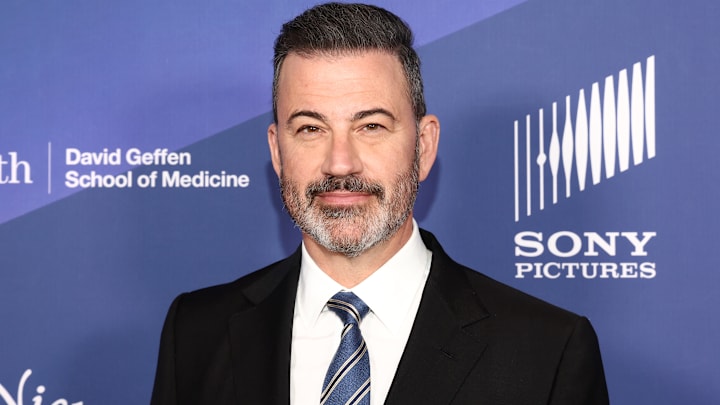For years, the media has been quick to declare late-night television on life support, claiming viewers are tuning out and the era of monologues, celebrity interviews, and viral sketches is over. But Emmy Award-winning talk show host Jimmy Kimmel begs to differ. In a mid-July interview with Variety, he shared his thoughts on what he believes is a misleading narrative being pushed by the media.
First, he starts off by acknowledging that it's true that traditional network television viewership is indeed going down. But then he goes on to point out that late-night shows are far from dying. Despite fewer people watching live on network TV, Kimmel claims late-night shows are actually being watched more than ever, but in new ways, like online.
He goes on to give examples, noting that his own monologues regularly get 2 to 5 million views each night online, Seth Meyers’ segments draw millions just on YouTube, and Jon Stewart’s The Daily Show Monday episodes can rack up 5 million views. Kimmel also mentions to Variety that these numbers don’t even include other social media or streaming platforms, which add even more viewers.
"But people are still watching late-night — just in different places. Our monologues get between 2 and 5 million views, sometimes more, every night. Seth Meyers gets 2 million on YouTube alone. We’re not even talking about Instagram or the other platforms. “The Daily Show” — Jon Stewart on a Monday night will get 5 million views. Then you add in the TV ratings. So the idea that late-night is dead is simply untrue. People just aren’t watching it on network television in the numbers they used to — or live, for that matter."
Essentially, he argues that audience habits have shifted. People aren’t necessarily watching live TV anymore. They stream clips or episodes later online or on social media. But despite this change, the total number of viewers is still massive, and late-night shows are reaching audiences in ways that traditional ratings don’t capture. Kimmel emphasizes that this doesn’t signal the death of late-night television. It shows the genre is adapting and thriving in the digital age.
He even goes on to compare these digital viewership numbers to streaming shows, pointing out that in many cases, late-night shows are drawing audiences comparable to or even exceeding some of the most popular shows on Netflix and Hulu.
"If you look at streaming numbers — how many streaming shows get 10 million views a week? Twenty million? Very few. I think if you really look at how people are watching these shows, and the numbers, it’s right up there with the top shows on Netflix and Hulu. Yet in the media, you’d think this is a rotting corpse — which it most certainly is not. It just doesn’t add up. It’s a great storyline for the press, but it’s simply not true."
In conclusion, Kimmel argues that late-night TV remains as relevant and popular as ever. It continues to reach millions of viewers across YouTube, streaming platforms, and social media, proving that the narrative of its demise is simply untrue. Honestly, as a fan myself, it’s exciting to see how these shows have evolved. Catching clips online or streaming full episodes has made it easier than ever to enjoy the humor, interviews, and viral moments, and it really shows that late-night is alive, thriving, and as entertaining as ever.
New episodes of Jimmy Kimmel Live! air on ABC. Kimmel is currently enjoying his annual summer break. He is expected to return to his hosting duties on Tuesday, Sept. 2, 2025, but in the meantime, fans can enjoy episodes hosted by a lineup of guest hosts.
